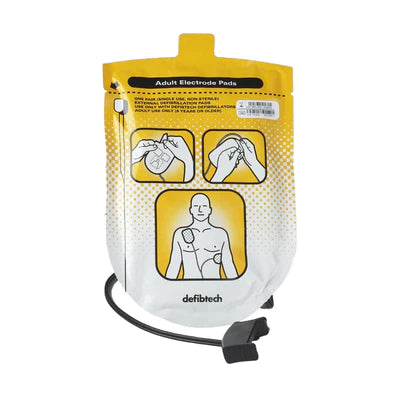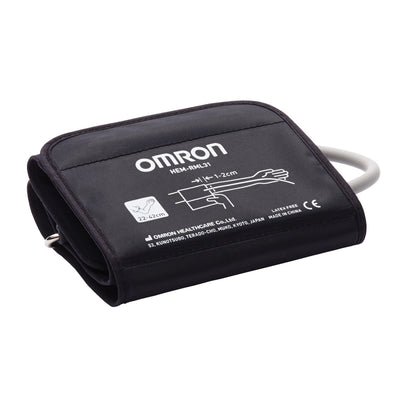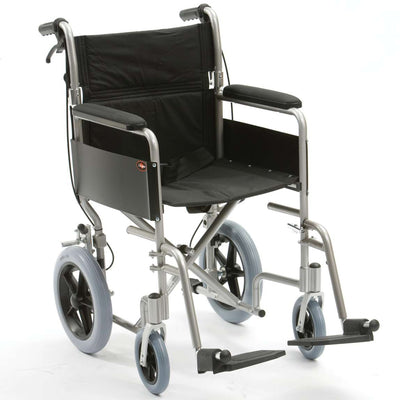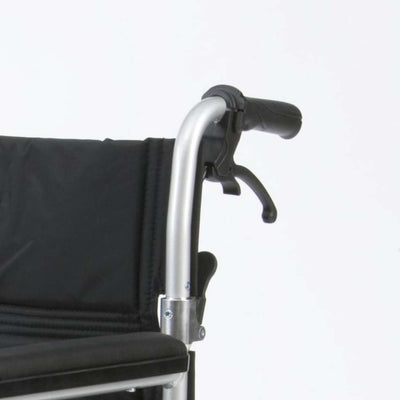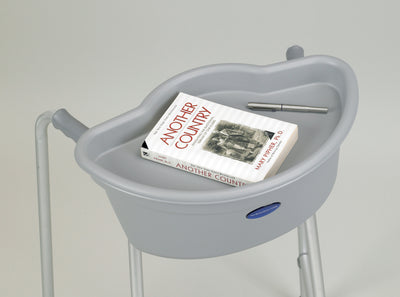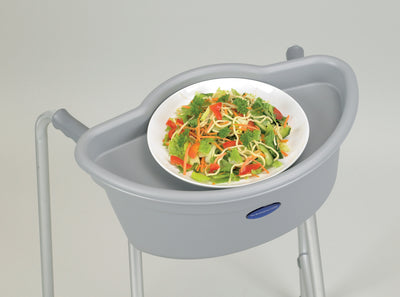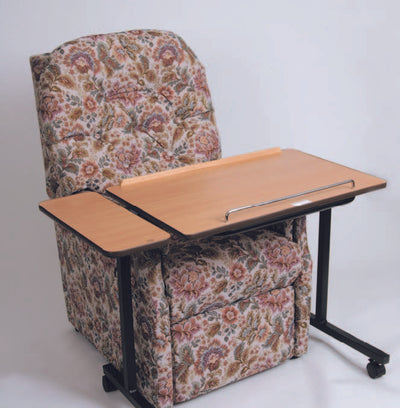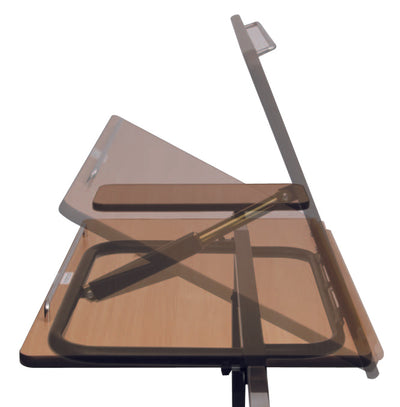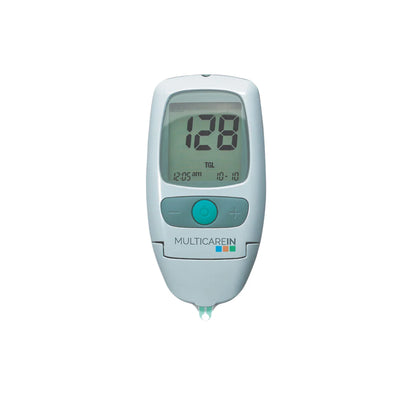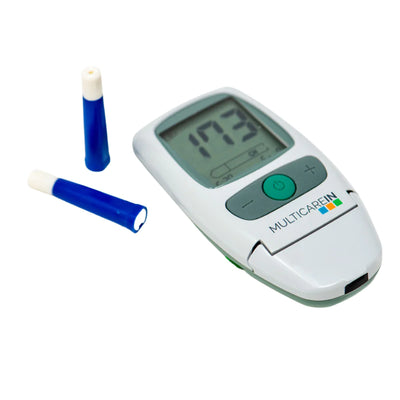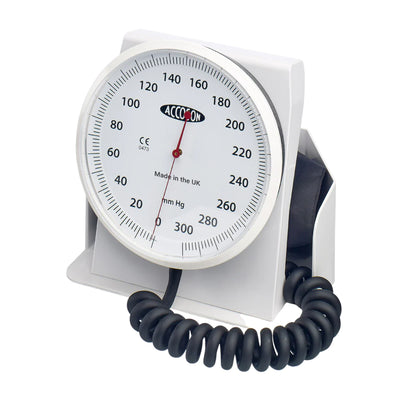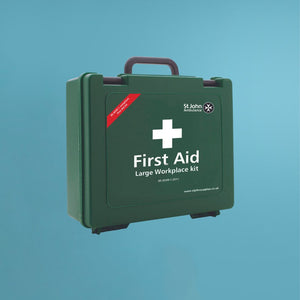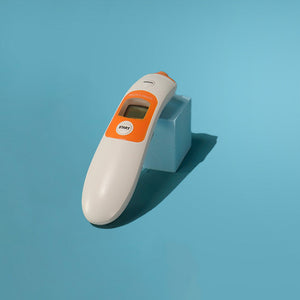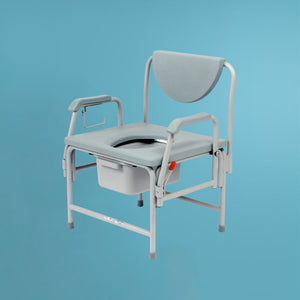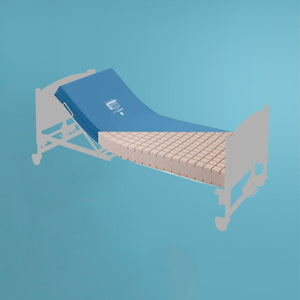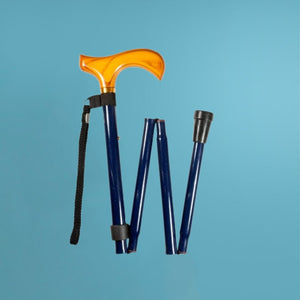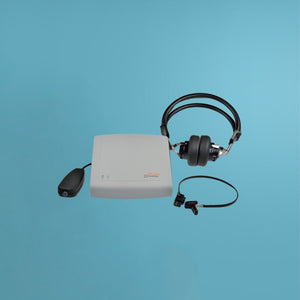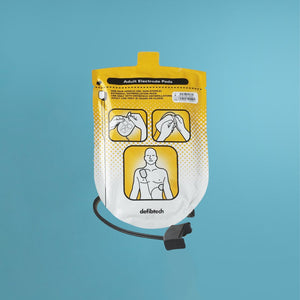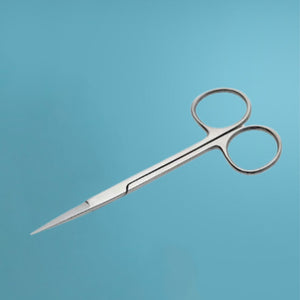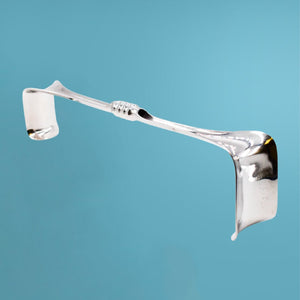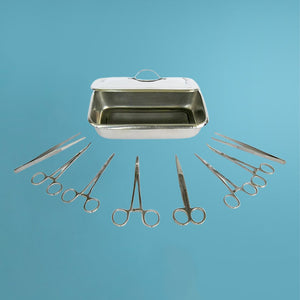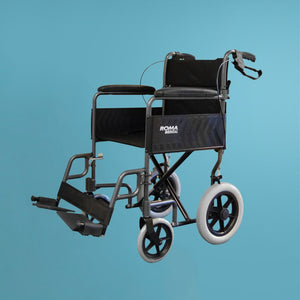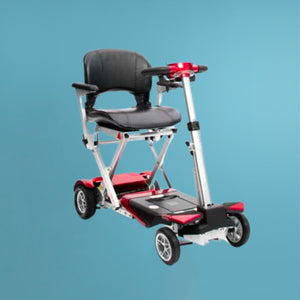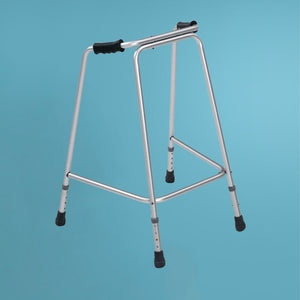Blogs
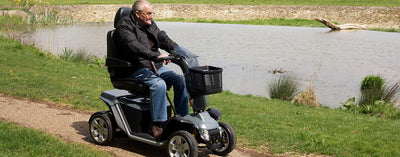
Who invented the Mobility Scooter?
18.12.2023
The Invention of the 1st Mobility Scooter
Mobility scooters have become a common sight in many parts of the world, especially in developed countries with ageing populations. These vehicles provide a means of transportation for people with mobility issues, allowing them to move around with ease. However, the history of mobility scooters is not well known. In this essay, we will explore the invention of the 1st mobility scooter.The first mobility scooter was invented in 1968 by a man named Allan R. Thieme. Thieme was a plumbing and heating contractor from Michigan who had a family member with multiple sclerosis. He saw the difficulties that his relative faced when trying to move around, and he wanted to find a solution to help people like him.
Thieme's invention was called the Amigo, and it was a three-wheeled electric scooter. It was designed to be lightweight, easy to manoeuvre, and compact enough to fit through narrow doorways. The Amigo had a maximum speed of 3 mph and could travel up to 20 miles on a single charge.
The Amigo was an instant success, and Thieme soon found himself inundated with orders from people who wanted to buy the scooter. He established Amigo Mobility International, Inc. to manufacture and distribute the scooters, and the company quickly grew into a multimillion-dollar business.
Over the years, the design of mobility scooters has evolved significantly. Today's models are more powerful, more comfortable, and more stylish than the original Amigo. However, Thieme's invention paved the way for the development of these vehicles and made a significant contribution to the lives of millions of people with mobility issues.
We can see that the invention of the 1st mobility scooter by Allan R. Thieme in 1968 was a significant milestone in the history of mobility aid. The Amigo provided people with mobility issues with a means of transportation that was easy to use, compact, and reliable. Thieme's invention revolutionized the way people with mobility issues could move around and paved the way for the development of modern mobility scooters that we see and use today.
Here is a short timeline of events that led up to the mobility scooter we know today:The first mobility scooter was invented by Allan R Thieme in 1968. He created the first mobility scooter for a family member who had a limited ability to walk.In the 1970s, mobility scooters became popular among people with disabilities, and the first company to mass-produce them was Amigo Mobility International.The 1980s saw the introduction of the first electric mobility scooter. This innovation made mobility scooters more efficient, reliable, and easier to use.In the 1990s, mobility scooters became more widely available and affordable. This decade also saw the introduction of more advanced features, such as swivel seats, adjustable armrests, and better suspension.In the 2000s, there was a significant increase in the use of mobility scooters among older adults. This was due to the aging population and the need for increased mobility.
Today, mobility scooters continue to evolve. They are becoming more lightweight, portable, and designed with the latest technology.Mobility scooters have come a long way since their invention in 1968. Despite the challenges, the development of mobility scooters has enabled people with limited mobility to lead more independent and fulfilling lives.
Learn More Now

Quick Guide | Tyre Maintenance for Mobility Scooters
11.12.2023
Tyre Maintenance for Mobility Scooters
Tires are unquestionably one of the most critical components of your scooter, as they provide essential traction and stability for a smooth and safe ride. Proper maintenance of your scooter's tires is crucial for optimal performance and longevity. In addition to common tire care practices, consider these helpful tips to keep your tires in excellent condition:
Regularly clean the tires to prevent dirt and debris build-up, which can cause damage, reduce traction, and negatively affect performance.
Use a soft-bristle brush or an old toothbrush to gently scrub the tires, paying particular attention to the grooves in the tread. This will help dislodge dirt, debris, and other particles that may have become embedded in the rubber.
For more stubborn dirt and grime, you can use a mild soap and water solution. Fill a bucket with warm water and mix in a few drops of mild dish soap. Dip the soft-bristle brush or toothbrush into the soapy water and scrub the tires thoroughly. Be sure to avoid using harsh chemicals or abrasive cleaners, as they can damage the tire's rubber compound.
After scrubbing the tires with soapy water, rinse them with a garden hose or a bucket of clean water to remove any remaining soap residue and dirt. Be cautious when rinsing around the brake components to prevent water from entering areas it shouldn't.
Use a clean cloth or towel to wipe the tires dry, removing any excess water. This will help prevent the growth of mould or mildew and ensure that the tires are ready for your next ride.
Invest in high-quality tires when possible. While they may come at a higher cost, these tires often last longer and provide superior performance, making them a worthwhile investment in the long run.
Be mindful of the type of terrain you ride on. If you frequently navigate rough or uneven surfaces, opt for tires specifically designed to handle such conditions, as they can offer improved durability and performance in those environments.
Some examples of terrains you should keep an eye out for:
Uneven surfaces: Uneven terrains, such as cracked sidewalks, cobblestones, or tree roots, can cause instability and make it difficult to maintain control of your scooter. Always approach uneven surfaces slowly and with caution.
Gravel or loose stones: Loose stones or gravel can reduce traction and make it harder to steer or brake your scooter. Whenever possible, avoid riding on these types of surfaces.
Steep inclines or declines: Mobility scooters have limitations when it comes to climbing steep hills or navigating steep descents. Be aware of the slope gradient recommended by your scooter's manufacturer, and avoid exceeding these limits.
Wet or slippery surfaces: Wet or slippery conditions, such as those caused by rain, ice, or spilt liquids, can reduce traction and make it difficult to maintain control of your scooter. Exercise caution when riding in these conditions and avoid sharp turns or sudden braking.
Soft surfaces: Riding on soft surfaces, like sand, mud, or thick grass, can cause your scooter's wheels to sink or become stuck, making it difficult to manoeuvre. Stick to solid, firm surfaces whenever possible.
If you encounter unusual vibrations, noises, or handling issues while riding your scooter, consult a professional to inspect your tires and confirm their condition. Addressing potential problems early can help prevent more significant issues down the line and ensure your safety on the road. Proper tire care not only promotes optimal performance but also helps extend the lifespan of your tires.
Learn More Now

Quick Guide | Cleaning & Maintenance for Mobility Scooters
02.01.2024
Cleaning, Maintenance, and Storage
Taking care of your scooter is important to ensure its longevity and performance. There are several things you can do to keep your scooter clean, well-maintained, and properly stored. It is important to clean your scooter regularly using a soft cloth and mild detergent. This will help remove dirt and grime that can build up over time and damage your scooter's exterior.
Follow these steps to thoroughly clean your mobility scooter and keep it looking and functioning its best:
Gather cleaning supplies: You will need a soft-bristle brush, a sponge or microfiber cloth, a bucket, mild dish soap, clean water, and a dry towel or cloth.
Turn off the scooter: Ensure the scooter is turned off and unplugged from the charger before cleaning to prevent any electrical issues.
Remove any loose debris: Brush away any visible dirt or debris from the scooter's body, tires, and other parts using the soft-bristle brush.
Prepare a soapy solution: Mix a few drops of mild dish soap with warm water in a bucket to create a cleaning solution.
Clean the scooter body: Dip the sponge or microfiber cloth in the soapy solution and gently scrub the scooter's body, focusing on areas with dirt or stains. Avoid getting water near any electrical components or controls.
Clean the tires and wheels: Use the soft-bristle brush to scrub the tires and wheels with the soapy solution, making sure to clean between the treads and around the rims.
Rinse with clean water: Use a clean, damp cloth or sponge to wipe away any soap residue from the scooter's body and tires. Be cautious not to let water enter any electrical components or controls.
Dry the scooter: Use a dry towel or cloth to thoroughly dry the scooter's body, tires, and other parts, ensuring no water remains on the surface
Check for any issues: After cleaning, inspect your scooter for any loose or damaged parts, and address any concerns as needed.
Allow the scooter to air dry: Let the scooter air dry for a short period before using it again or storing it away.
Some other things to consider when cleaning your scooter:
Avoid using harsh chemicals or abrasive cleaners to clean your scooter. These can scratch or damage the scooter's surfaces, leading to costly repairs and decreased performance.
Storing your scooter properly can also help maintain its condition. When not in use, store your scooter in a dry and secure place, away from moisture and extreme temperatures. This will help prevent rust and other types of damage that can occur over time.
In addition to cleaning, proper maintenance is also important. This includes regular inspections of the tires, brakes, and other components to ensure they are in good working order. If you notice any issues or problems with your scooter, it's important to address them as soon as possible to prevent further damage or potential accidents.
Regular cleaning is also important to keep the scooter functioning properly. Dust, dirt, and debris can build up over time, which can affect the operation of the scooter. Wiping down the scooter regularly and keeping it free of debris can help prevent issues from occurring.
By following these tips for cleaning, maintenance, and storage, you can help ensure your scooter stays in great condition and lasts for years to come!
Learn More Now

Quick Guide | Brake Maintenance for Mobility Scooters
18.12.2023
Brake Maintenance Tips
Maintaining your scooter's brakes is critical for ensuring your safety while riding. Proper brake care is essential for optimal performance and timely replacements when needed. Here are some valuable tips for preserving the condition of your scooter brakes:
Regularly inspect the brake pads for wear and replace them when necessary. Brake pads should be replaced when they are worn down to 1/8 inch (3mm) or less. Signs that it may be time to replace the pads include a squealing noise when applying the brakes or a longer-than-usual stopping time for your scooter.
Make sure the brake cables are correctly adjusted. Improperly adjusted cables, whether too loose or too tight, can cause the brakes to malfunction. These should be adjusted by a technician.
Clean the brake discs and drums consistently. Dirt and debris can accumulate on your brake discs and drums over time, leading to accelerated wear. To clean them, use a soft cloth or brush and a brake cleaner spray. Apply the cleaner to the discs and drums, then gently wipe them clean with a cloth or brush, ensuring all debris is removed.
Remember, safety should always be a top priority. By conducting regular maintenance on your scooter brakes, you can help prevent accidents and ensure you ride safely for years to come. Always stay proactive with brake care and address any concerns promptly to enjoy a secure and reliable scooter experience.
Learn More Now
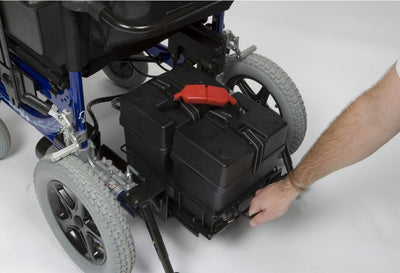
Quick Guide | Battery Maintenance for Mobility Scooters
18.12.2023
Battery Maintenance
The battery is the most vital component of your mobility scooter, playing a critical role in its overall performance. Proper maintenance of the battery is essential for ensuring a smooth and reliable ride. By following a few key maintenance steps, you can extend the life of your battery and keep your scooter running optimally.
First and foremost, keeping your scooter battery charged is crucial for maintaining its longevity. We recommend charging the battery consistently, preferably after each use, to guarantee that it is always ready when needed. However, overcharging the battery can be detrimental, potentially reducing its lifespan. Be sure to consult the manufacturer's instructions for guidance on the appropriate charging duration for your specific mobility scooter.
Another essential aspect of scooter battery maintenance is keeping the battery terminals clean and free from corrosion. Accumulation of corrosion can lead to poor connections, which can negatively impact performance and even result in battery failure. To maintain clean battery terminals, we suggest using a wire brush or sandpaper to gently remove any build-up, taking care not to damage the terminals themselves. Always refer to the manufacturer's manual for specific instructions on maintaining your battery and preventing corrosion.
Regularly checking the battery voltage is another vital part of battery maintenance. Monitoring the voltage allows you to assess the battery's health and identify potential issues before they become problematic. We recommend checking the voltage at least once a month, or more frequently if you use your scooter on a regular basis.
In summary, your mobility scooter's battery is its lifeline, and proper care is essential to ensure its longevity and optimal performance. By keeping an eye on battery health and following these maintenance tips, you can enjoy a dependable and smooth ride on your mobility scooter for years to come.
Learn More Now
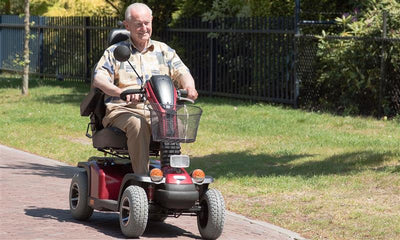
Quick Guide | Mobility Scooter Maintenance
18.12.2023
The Importance of Maintenance
Mobility scooters are an incredible means of preserving independence, freedom, and mobility for individuals with disabilities or mobility challenges. These scooters offer an easy and dependable mode of transportation for both indoor and outdoor use. However, to maintain their optimal performance and ensure longevity, mobility scooters require regular maintenance and care.
Here is a quick checklist that you can use to keep your scooter in top-notch condition,
It is crucial to perform routine maintenance checks consistently. Here are some key maintenance tips for preserving your scooter's condition:
Regular cleaning to prevent the buildup of dirt and mud
Monitor the battery's health and tire pressure regularly
Protect the scooter with a cover when not in use
Regular checks on brakes, lights, and indicators to ensure they are all functioning correctly
Charge the battery consistently but avoid leaving the battery in a discharged state for extended periods,
Keeping your scooter road ready
If you are travelling outdoors in the public, it is crucial to ensure that the scooter's brakes, lights, and indicators are all functioning correctly.
One of the most critical aspects of maintaining a mobility scooter is ensuring that the brakes are functioning correctly. This is especially important for those who use their scooter on busy roads or in crowded areas. Regularly checking the brake pads, cables, and fluid levels can help prevent accidents and ensure that the scooter is ready for any situation.
Regularly check the tyre pressure to ensure you are getting a smooth ride. Especially before and after long trips!
Another important maintenance task is checking the lights and indicators. These are crucial for visibility and communication with other road users. It is important to check that all lights are working correctly, including headlights, taillights, and turn signals.
It is important to ensure that the battery is charged and functioning properly, as this can affect the operation of the lights and indicators.
It is important to have the scooter serviced regularly by a qualified technician. This can help identify any potential issues before they become serious problems. Regular servicing can also help extend the life of the scooter and ensure that it is road-ready for years to come.
Regular maintenance of mobility scooters is key for their durability and reliability. By sticking to these quick maintenance guidelines, you can keep your scooter in excellent condition, allowing you to enjoy your mobility for years to come. If you are uncertain about any maintenance procedures or if your scooter requires repairs, it is always best to consult a professional technician for assistance and expert advice
Learn More Now

